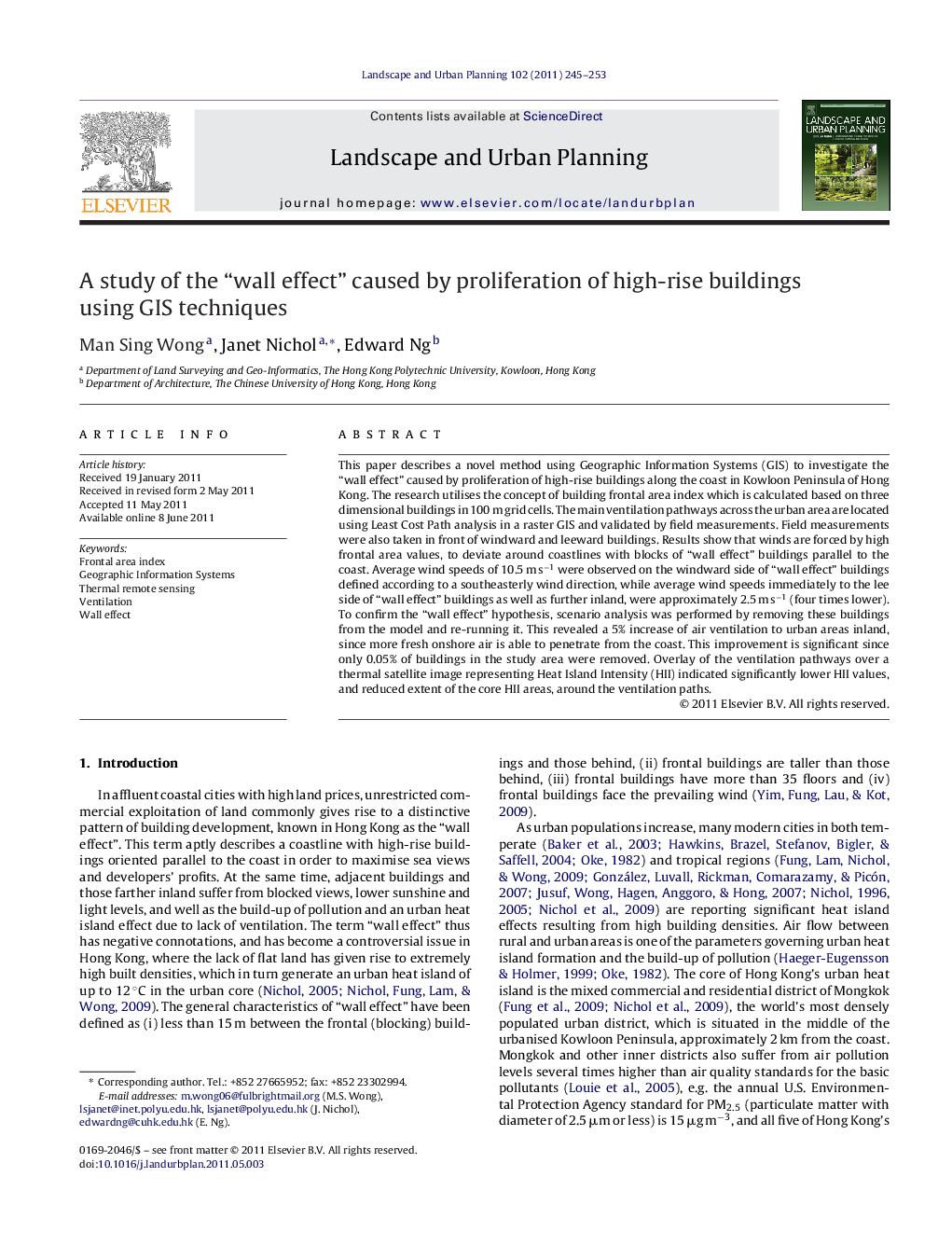| کد مقاله | کد نشریه | سال انتشار | مقاله انگلیسی | نسخه تمام متن |
|---|---|---|---|---|
| 1049710 | 945632 | 2011 | 9 صفحه PDF | دانلود رایگان |

This paper describes a novel method using Geographic Information Systems (GIS) to investigate the “wall effect” caused by proliferation of high-rise buildings along the coast in Kowloon Peninsula of Hong Kong. The research utilises the concept of building frontal area index which is calculated based on three dimensional buildings in 100 m grid cells. The main ventilation pathways across the urban area are located using Least Cost Path analysis in a raster GIS and validated by field measurements. Field measurements were also taken in front of windward and leeward buildings. Results show that winds are forced by high frontal area values, to deviate around coastlines with blocks of “wall effect” buildings parallel to the coast. Average wind speeds of 10.5 m s−1 were observed on the windward side of “wall effect” buildings defined according to a southeasterly wind direction, while average wind speeds immediately to the lee side of “wall effect” buildings as well as further inland, were approximately 2.5 m s−1 (four times lower). To confirm the “wall effect” hypothesis, scenario analysis was performed by removing these buildings from the model and re-running it. This revealed a 5% increase of air ventilation to urban areas inland, since more fresh onshore air is able to penetrate from the coast. This improvement is significant since only 0.05% of buildings in the study area were removed. Overlay of the ventilation pathways over a thermal satellite image representing Heat Island Intensity (HII) indicated significantly lower HII values, and reduced extent of the core HII areas, around the ventilation paths.
► “Wall effect” caused by proliferation of high-rise buildings.
► Ventilation pathways are located using Least Cost Path analysis in GIS.
► Wind speeds behind the wall effect buildings were four times lower.
► An increase of 5% ventilation was observed when 0.05% of the buildings were removed.
► The paths acts as fresh air corridors, reducing the extent of the heat island core areas.
Journal: Landscape and Urban Planning - Volume 102, Issue 4, 30 September 2011, Pages 245–253